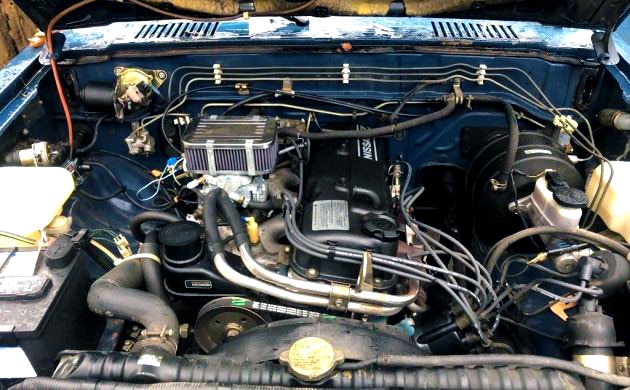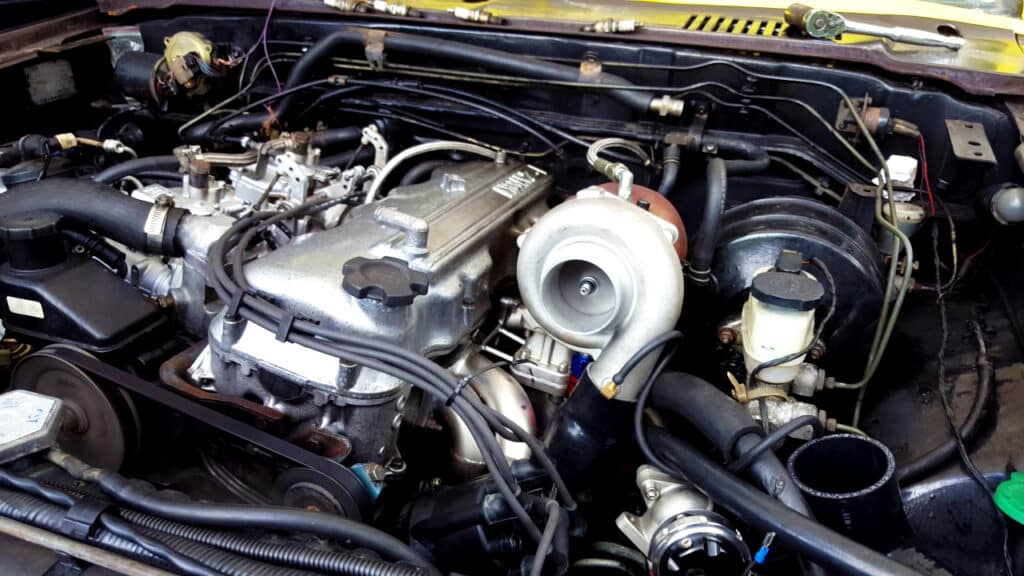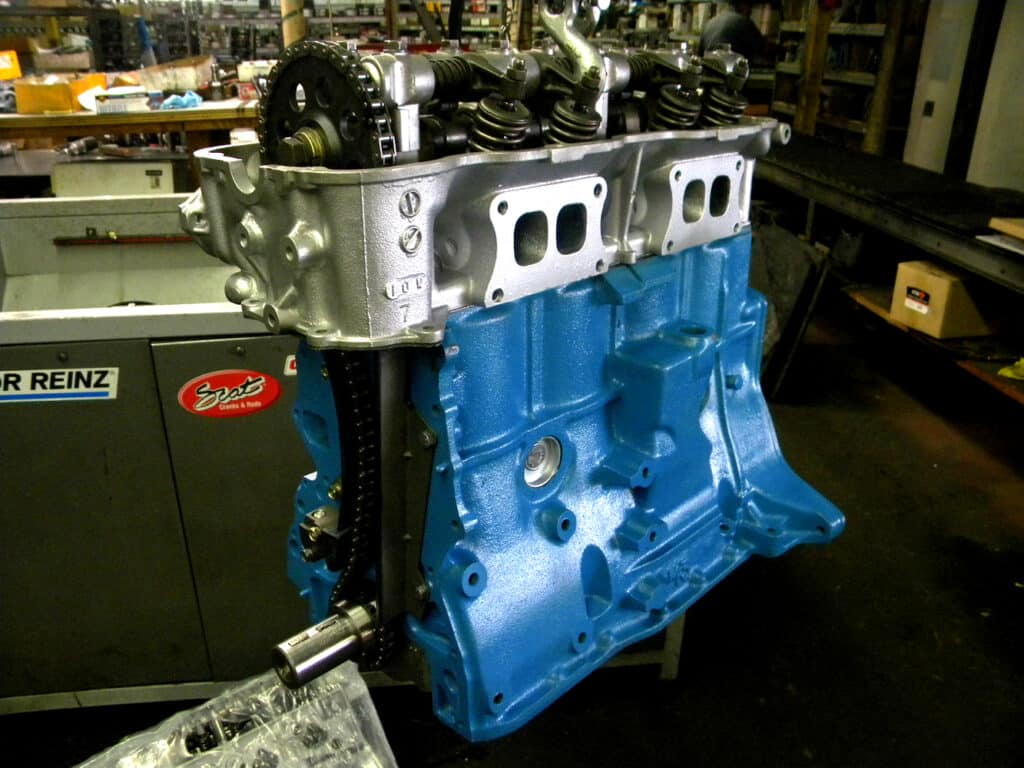Nissan’s Z24 (also called NAPZ or NAPS-Z Nissan Anti-Pollution System) was the last of the Z-series engines as the company transitioned from the old and aging L-series.
Available as carbureted and fuel-injected versions, the Z24 four-banger was seen in a variety of Nissan cars made between 1983 and 1990.
All Z-series engines shared a similar construction and were 8-valve units with a SOHC design. However, the Z24, in particular, had a taller deck height versus other members of the Z-series family.
The 2.4L unit came in two variants: Z24 and Z24i, with the latter receiving noticeable improvements to the fueling system and engine management.
Join us as we take an in-depth look at the Nissan Z24 engine, discussing its specs, reliability, and tuning potential.
Nissan Z24: Specs

- Engine code: Z24, Z24i
- Layout: Inline 4 cylinder SOHC 8V (2 valves per cylinder)
- Displacement: 2.4L (2,389 cc)
- Fuel system: Carburetor / throttle body fuel injection
- Cylinder bore: 89 mm (3.50″)
- Piston stroke: 96 mm (3.78″)
- Compression ratio: 8.3:1
- Power: 103-106 hp at 4,800 rpm
- Torque: 134 lb-ft at 2,800 rpm, 137 lb-ft at 2,400 rpm
- Firing order: 1-3-4-2
The Z24 is all about torque, thanks to its undersquare design. The Z-series had an innovative engine design compared to its predecessor, especially the head layout.
The engine features a crossflow cylinder head, which moves the intake ports to the right side of the vehicle opposite to the exhaust ports, allowing for increased performance and reduced emissions.
As mentioned earlier, the Z24 had two variants; the major difference between them is the fuel system. The Z24 uses a carburetor, while the Z24i uses throttle body fuel injection.
Additionally, the Z24i features an optical crank angle sensor in the distributor instead of a vacuum advance and ignition module.

Vehicles featuring the Z24 engine include:
- 1983-1986 Nissan/Datsun 720
- 1986-1989 Nissan Pathfinder (E model only)
- 1987-1990 Nissan Vanette/Nomad
- 1986-1989 Nissan Hardbody Truck (Z24i)
- 1986 Nissan/Datsun 720 (Z24i) (ST models only)
Nissan Z24 Engine Common Problems
As with any engine, the Z24 is not perfect, in that it has its fair share of problems. The most common issues faced by Z24 owners include:
- Engine misfire
- Lack of power
- Overheating
- Oil leaks
- Rough idle
- Unusual engine noises and vibrations
- Engine failure (rare)
The Nissan Z24 is an excellent engine, but it’s not too powerful, not by modern standards at least.
Most forum members have discussed its apparent lack of power but praised the engine for its low-end torque and punchy mid-range.
As these are fairly old engines, misfires and oil leaks are to be expected. Another problem with the Z24 is a collapsed muffler caused by the engine backfiring.
Many owners end up performing a muffler delete as a cheap yet effective way to address this problem.

Check the seals to ensure they aren’t worn out. If they are, replace them. Misfires can be addressed by checking the plugs and distributor. Timing could also be a reason, as is a clogged fuel filter or MAP sensor in the case of a Z24.
Overall, though, the Z24 is considered a fairly reliable engine, with some owners racking up more than 300,000 miles with just minor tweaks and routine maintenance.
Nissan Z24 Engine Modifications
Understand that the Z24 is not a high performance Nissan engine. That’s why you don’t see many Z24 swap kits available. Although horsepower is not its thing, the engine is designed for torque-heavy applications, ideal for hauling and utility.
These engines weren’t built for drag races, but they can withstand some serious power if you decide to do a head swap or install a turbocharger or supercharger.
It’s rare to find a Z24 build with performance as the main goal, as a KA24 (its successor) is more advanced and easily available with excellent aftermarket support. But it’s not impossible to modify a Z24.

If you have the carbureted version, consider installing a Weber 32/36 or a 38/38 for a generous boost in horsepower.
Swapping L heads is not uncommon in the Z24 space, as it allows for better flow at higher revs, especially above 4,500 rpm. Some of the other engine mods include:
- Short ram or cold air intake
- Camshaft upgrade
- Intake manifold and larger throttle body
- Motor mounts
- Aftermarket headers and exhaust
- Engine maps
As for Z24 engine rebuild kits, most options are pretty comprehensive, with a complete set of gaskets, pistons, rings, bearings, etc. The engine is fairly simple relative to some of the modern ones but it’s not compliant with OBDII readers.

Concluding Summary
It’s clear that the Z24 isn’t the first choice for swapping into a track car even though it can be done. If you’re all about building a drift truck or a lowered truck to have fun in around town, then it’s something you might want to consider.
What are your thoughts on the Z24 engine? Do you prefer the Z24i over the carbureted version? Let us know by leaving a comment below.
If you enjoyed reading this post, consider sharing it on Reddit, Facebook, or your favorite car forums!

